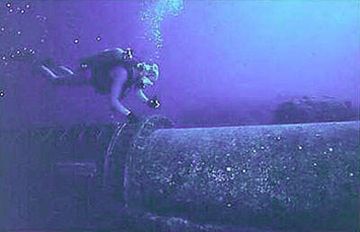Bestcare - Spirulina — Cultured vs Wild
 Many have asked the question, which is better, cultured Spirulina or wild blue-green algae collected from lakes?
Many have asked the question, which is better, cultured Spirulina or wild blue-green algae collected from lakes?
First, we suggest that the health-minded consumer try the products.
How do the various products taste – clean or bitter?
How does one feel after eating them? Is the product reasonably priced?
Cultured algae have several major advantages. One way to view this is to consider the history of corn. At first it grew wild, and fossil evidence indicates that the original corn ears were tiny, the size of a finger. Generations of Native Americans developed and bred new strains: Their skills and techniques led to the development of the modern staple varieties, which are hardier, larger, and more nutritious than their wild forerunners.
The development of Spirulina has taken a similar path, but because a generation of corn takes a whole year to grow, and Spirulina takes less than a week, the process has been much faster. Selecting from literally millions of billions of cells, aquaculturists have succeeded in developing superior strains of microalgae.
Growers in Hawaii add nutrients from one of the deepest, cleanest oceans on the planet. Clean, pure deep ocean water is pumped from 2000 feet (approximately 600 meters) below the surface of the ocean and added to Hawaiian Spirulina. This deep ocean water is rich in trace minerals and elements. Scientists estimate that this deep ocean water hasn’t been to the surface for over 2000 years—this is indeed very special water. Hawaiian Spirulina has been developed into a uniquely nutritious and potent species of Spirulina that has several times the carotenoid levels of wild strains of blue-green algae along with 94 minerals and trace elements.
Quality and Purity of Spirulina
Another very important reason for growing cultured microalgae is to control purity. Cultivated Spirulina ponds are sampled every day and carefully examined for any sign of contamination, ensuring that the consumer receives a pure product. Scientists believe there are over 30,000 species of microalgae.
The immense range of species includes nutritious varieties like Spirulina and chlorella, as well as potentially dangerous species such as the microcystis strains identified in Klamath Lake, Oregon, where a commercially sold blue green algae product is harvested. Microcystis is an alga that is toxic to the human liver. One must think of microalgae like mushrooms—common cultured table mushrooms are absolutely safe and healthful while others, such as some toadstools, can be poisonous. While microcystis has appeared in wild harvested blue green microalgae products in the past, it has never been found in cultured Spirulina.
The microalgae farmer's "field" is a pond and the "seed" is a live culture. Ponds are lined with food-quality liners covered with a layer of natural calcium carbonate (which coral is composed of). Paddlewheels gently stir the cultures, ensuring optimum light for each cell and helping the pond to release oxygen. The culture thrives in these ideal conditions, growing several times faster than it would in the wild.
High Productivity
Cultured Spirulina grows extremely fast: In fact, Spirulina farms are the most productive agricultural systems in the world. A typical output for year round production, such as that realized in Hawaii, is over 400,000 kilograms a year on just 45 hectares of land. When you consider that Spirulina is typically 60% protein, that means over 240,000 kilograms of pure protein is produced each year, far surpassing the per-hectare yields of high-protein crops such as soybeans and triticale wheat. And, unlike other forms of farming, there is no fertilizer or manure runoff to pollute ground water or streams. It's refreshing to know that the world's most productive agricultural systems are non-polluting and use no herbicides or pesticides!
Excerpted the book SPIRULINA: Nature’s Superfood by Kelly Moorhead and Bob Capelli with Dr. Gerald R. Cysewski